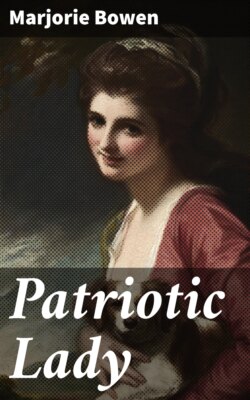Читать книгу Patriotic Lady - Bowen Marjorie - Страница 3
На сайте Литреса книга снята с продажи.
FOREWORD
ОглавлениеTable of Contents
It has been impossible to write this study of Emma, Lady Hamilton, without touching upon subjects which are extremely controversial. It is not within the scope of this book, however, to attempt to revive disputes and arguments which have long since been worn threadbare, and which concern not so much matters of fact as matters of opinion. Many writers who have dealt with the career of Emma, Lady Hamilton, have set themselves the task, not of discovering the truth, but of making out a case according to personal prejudice. The works given in the bibliography at the end of this volume cover the whole range of opinions held, and judgments given, by Italian, French, Austrian and English writers on the end of the Revolution in Naples in 1799. Any reader who doubts the accuracy or fairness of the present writer's version of this event is referred to the works of these authorities, all of which are easily procurable.
It must be added, however, that these writers differ considerably in their points of view and their knowledge, are often confused by passion, or are deliberately inaccurate through prejudice; therefore all, or nearly all, the evidence must be read, if an impartial judgment is to be formed on matters that have caused such bitter emotions and such fierce differences of opinion.
It is useless, for instance, to read Nelson and the Neapolitan Jacobins by H. C. Gutheridge, without reading Lady Hamilton et la Rivolution de Naples by Joseph Turquan and Jules d'Auriac, in which the English author's points are carefully dealt with, and his arguments often refuted. Further, it is impossible to understand the situation and sentiments of the Patriots of Naples and the Italian point of view without being acquainted with the Jacobins' own statements and the opinions of Italian historians, which may be found embodied in the writings of Vincenzo Cuoco, Francesco Lomanaco, Carlo Botta, P. Colletta, and G. M. Arrighi, and in those of two modern Italian scholars of the first rank, who have made impartial and patient researches into the history of the Novantanove; Benedetto Croce and Pasquale Villari. The latter, in his Nelson, Caracciolo, la Rivoluzione di Napoli, published in Discussioni critiche Discorsi, gives a masterly summing up of the whole controversy and of the works of all the writers who have discussed the questions raised by the part played by the English in the Bourbon reaction.
Another cool and detached account of the affair is given by Professor Huefer in his article La fin de la Ripublique Napolitaine, published in Nos. 83-84 of La Revue Historique de Paris, and a useful book is that published under the same title as Professor Villari's essay, by F. Lemmi, Florence, 1898.
Mr. David Hannay, in his edition of Southey's Life of Nelson, is conspicuous for his fairness in dealing with the Neapolitan episode, while the chapter on Caracciolo, in J. Cordy Jeafferson's Lady Hamilton and Lord Nelson, may be cited as an example of the kind of writing that has too often misled the English reader as to the characters and events of Naples in 1799.
In conclusion, some words of personal explanation may be added. As very little is known of Emma Hamilton before 1782, this account of her life begins in that year, and references to her early youth are given as rumours or gossip only. It is most likely that there was much truth in these tales—some such life as they indicate Amy Lyon must have led—but the evidence for this part of her career is flimsy and contradictory and many of the well-known anecdotes of her early life rest on very doubtful authority.
For the same reason several often-repeated stories relating to Lady Hamilton have been omitted from the later part of the book, but there is sufficient authentic material available from which to construct a portrait of this woman, remarkable in herself and extraordinary in her life and adventures.
M. Bowen. 16, Queen Anne's Gate, London, S.W. July, 1935.
